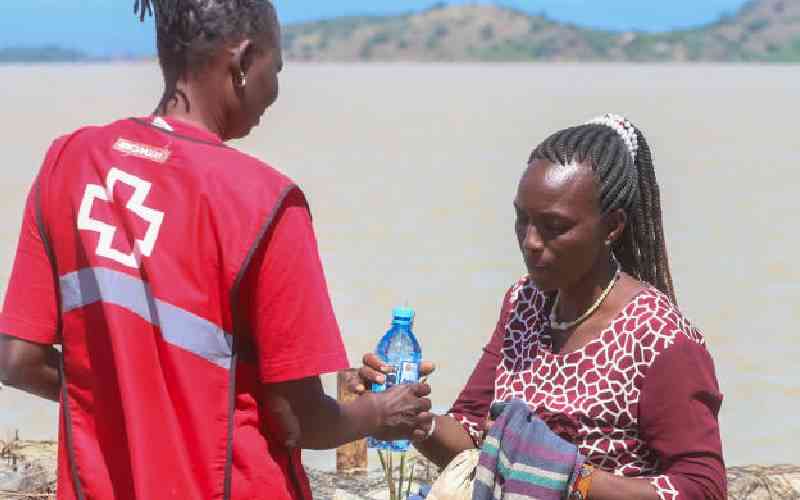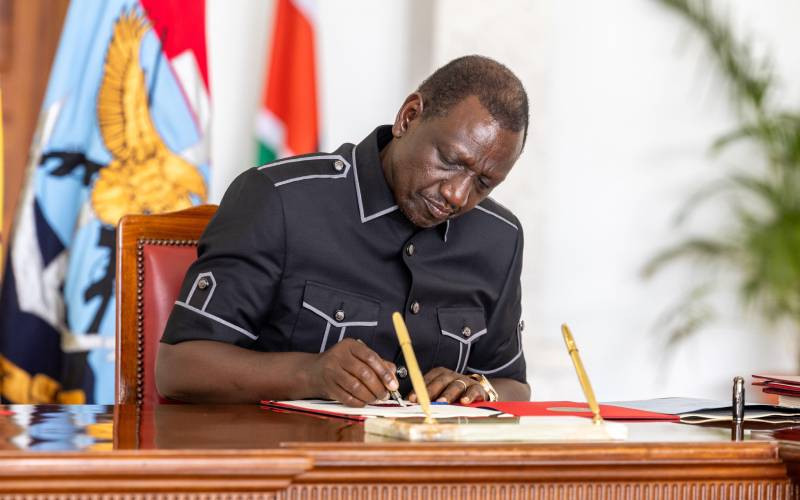Witness protection is recognised as a fundamental human right by various instruments of both international and national law in the administration of justice.
Article 50 of the Constitution of Kenya, under the Bill of Rights, not only provides for the protection of identity of witnesses and vulnerable persons in the interests of fair hearing before a court or tribunal, but also for enactment of legislation providing for the protection, rights and welfare of victims of offences.
The much anticipated Witness Protection Rules were finally gazetted creating a much more conducive and secure environment for witnesses to testify.
Chief Justice Willy Mutunga gazetted the Witness Protection Rules 2015 on October 30, 2015. The rules will became operational on Monday, which is 30 days after publication in the Kenya Gazette as stipulated in law.
Dr Mutunga had tasked the Witness Protection Agency (WPA), in its capacity of mainstreaming witness protection in the country, to draw up requisite draft rules of court as envisaged under Section 36 (2) of the Witness Protection Act for his consideration. Various stakeholders in the justice sector gave their input in a bid to make the rules all-inclusive and acceptable.
The final gazettement of the rules by the Chief Justice marks an important milestone in ensuring that witnesses who are protected do not feel insecure when giving their testimonies in court.
The Witness Protection Act, Cap. 79 Laws of Kenya, provides for the protection of witnesses in criminal and other proceedings and establishes a Witness Protection Progamme to specifically protect the safety and welfare of crucial witnesses and related persons who are threatened, or at risk.
Witnesses are considered to be vital pillars in any successful criminal justice system. Any credible investigation or prosecution is mainly dependent on the quality of evidence adduced by witnesses to the crime, or about the crime.
Section 5 of the Witness Protection Rules spells out appropriate measures to facilitate the testimony of a protected witness. For instance, Section 5 (a) stipulates measures to prevent disclosure to the public or media of the identity or whereabouts of a witness. They include expunging identifying information from the court’s public records, redaction of statements, voice distortion, closed sessions and use of pseudonyms by the witness.
Courts will now have jurisdiction to admit witness evidence using audio-visual technology such as video conferencing and closed circuit television. This is in addition to video recording evidence-in-chief and interviews and using sound media or live link. Any measure allowed by the Court for the protection of a witness is expected not to prejudice the rights of an accused person to fair trial.
The court infrastructure has previously been a major concern for the safety and protection of witnesses in court proceedings. Section 5 (3) of the Witness Protection Rules now requires the Registrar to make available facilities and equipment to protect witnesses. Future refurbishment of courts and construction of new ones will therefore be required to factor in Section 5 (3) of the rules.
The Witness Protection Rules will provide clear rules of court on evidence and procedure to be observed by all parties to judicial proceedings. The bottom-line will be to ensure that witnesses and
victims not only testify in an environment that secures their rights to fair hearing, but also ensure justice is done.
 The Standard Group Plc is a
multi-media organization with investments in media platforms spanning newspaper
print operations, television, radio broadcasting, digital and online services. The
Standard Group is recognized as a leading multi-media house in Kenya with a key
influence in matters of national and international interest.
The Standard Group Plc is a
multi-media organization with investments in media platforms spanning newspaper
print operations, television, radio broadcasting, digital and online services. The
Standard Group is recognized as a leading multi-media house in Kenya with a key
influence in matters of national and international interest.
 The Standard Group Plc is a
multi-media organization with investments in media platforms spanning newspaper
print operations, television, radio broadcasting, digital and online services. The
Standard Group is recognized as a leading multi-media house in Kenya with a key
influence in matters of national and international interest.
The Standard Group Plc is a
multi-media organization with investments in media platforms spanning newspaper
print operations, television, radio broadcasting, digital and online services. The
Standard Group is recognized as a leading multi-media house in Kenya with a key
influence in matters of national and international interest.







